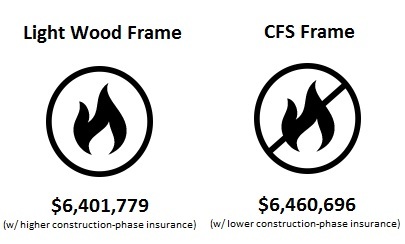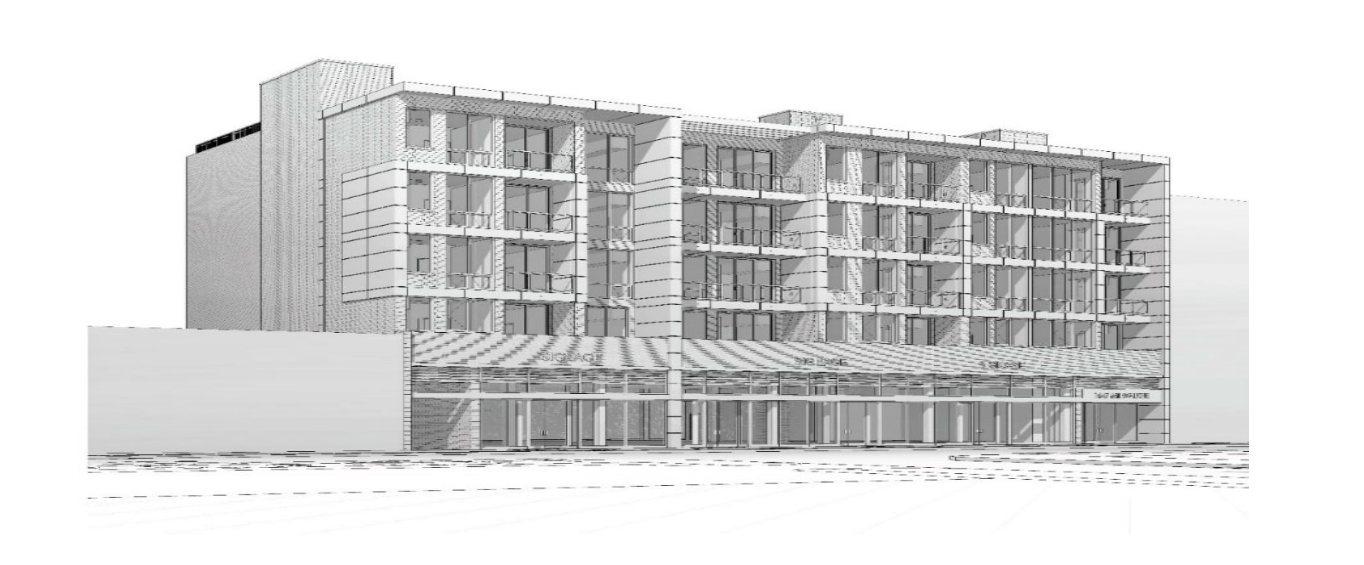The True Cost of Cold-Formed Steel v. Wood Framing
Discussions over how different materials affect the total cost of a building surface and resurface throughout the design and planning phases of a construction project. The building owner’s view of material costs can weigh heavily on the products selected, including the material chosen to frame the structure.
But what is the true cost of the framing material in the final analysis?
The wood industry claims wood framing costs less than other materials. The cold-formed steel (CFS) framing industry, however, focuses on the complete picture and has data to back it up.
A new study conducted by R. A. Smith, Inc., Brookfield, Wis., and sponsored by the Steel Framing Industry Association (SFIA) addresses framing costs on behalf of architects, building owners, and general contractors. The study, “Costs to Build with Cold-Formed Steel Versus a Wood-Framed Building,” establishes that CFS framing and wood framing cost relatively the same when the cost comparison includes the construction insurance premiums associated with using the selected material.
The true cost of CFS over wood is less than 1%:

Keep reading, because CFS framing may cost even less than wood framing for a variety of factors.

A new study shows that the comparative costs of framing a 5-story, 49,900 SF mixed-use apartment building should include the cost of construction insurance.
Study of two identical buildings
“Costs to Build with Cold-Formed Steel Versus a Wood-Framed Building” examines the cost of two identical buildings. One building design uses wood framing. The other features CFS.
Building design¹:
- 49,900 SF mixed-use, multi-family residential
- First-story, non-combustible (composite steel and concrete) podium
- First floor parking and retail
- Residential units on levels 2-5
- Rooftop penthouse
The project was designed with both systems fully engineered and drawn in contract document form. In-place construction costs were determined separately for the total building using both wood and CFS framing for theoretical locations in suburban Chicago, Ill., and Morristown, N.J.
The contract document for suburban Chicago compared only the hard construction costs associated with using the two types of framing materials.
The contract document for Morristown, N.J., included framing costs and an insurance cost impact study of the same building design.² The suburban Chicago building cost figures were adjusted for the New Jersey market to account for geographical differences and inflation, using RSMeans construction cost data and the US Consumer Price Index.
The actual final bid values were used for the total cost of the project as built, with separate breakout estimates provided as indicated in the table below.
Cost of Wood v. Cold-Formed Steel
5-Story, Mixed-Use, Multi-Family Residential Comparison
| Framing Type | Suburban Chicago | New Jersey | New Jersey Insurance Included |
|---|---|---|---|
| Wood Framed | $6,257,000 | $6,401,779 | $6,401,779 |
| CFS Framed | $6,420,000 | $6,568,551 | $6,460,696 |
| CFS Over Wood | +$163,000 | +$166,772 | +$58,917 |
| Difference | +2.61% | +2.61% | +0.92% |
| Difference | +$3.27/SF | +$3.34/SF | +$1.18/SF |
Suburban Chicago building cost reflects 2017 pricing. New Jersey building cost reflects 2019 pricing and includes the impact of construction-phase builders risk and general liability insurance premiums.
Source: SFIA and raSmith, “Costs to Build with Cold-Formed Steel Versus a Wood-Framed Building”
For the NJ project, the “Costs to Build” report cost comparison shows that a building owner saves more than $100,000 in insurance premiums by using metal framing instead of wood. That’s because the risk and cost of premiums are generally lower with non-combustible construction.
If built in suburban Chicago,² the building would cost:
- $6.257 million with wood framing (about $125/SF)
- $6.420 million — only $58,000 more — with CFS framing (about $129/SF)²
If built in Morristown,⁴ the building would cost:
- $6.402 million with wood framing (about $128/SF)
- $6.461 million, or slightly more, with CFS framing (about $129/SF)
In both cases, the framing represented about 20% of the total building cost.
Other mitigating costs
What some say is a salient cost difference between two materials proves to be insignificant on closer inspection. The cost variance between CFS framing and wood framing drops to less than 1% when insurance is included in the comparison.
Cold-formed steel (CFS) is non-combustible, which reduces the risk of property loss during construction and over the life of the structure. Reduced risk of property loss leads to lower insurance premiums for builders and owners. — Steel Framing Alliance™
The “Cost to Build” report notes that the choice of framing material affects both (1) the insurance premiums and (2) the maximum coverage limits available to a construction project.
The report adds that a mid-rise wood-framed building may not even be insurable. Furthermore, an owner or a contractor may need to purchase multiple policies to have adequate coverage to construct buildings with combustible materials like wood.
Other mitigating costs, not included in the comparison, could lead to CFS being the low-cost leader. These additional cost factors include:
- The cost of property and general liability insurance during the operation of the building
- Lower call-back and maintenance costs associated with CFS
- Steel’s generally more stable pricing
- CFS framing’s non-combustible nature
The “Costs to Build” report suggests that building owners, designers, contractors, and those who develop public policy should consider fire safety when making decisions on framing materials.
Insurance premiums and fire safety
In conclusion, comparing solely the initial cost of framing materials, as the wood industry claims, exaggerates one element of material selection. When the total cost of construction is calculated, and the total includes insurance premiums and fire safety, the true cost of a completed mid-rise building can be properly determined.
Thus, the “Cost to Build” report establishes the complete picture between CFS and wood. The cost of CFS framing and wood framing is not significantly different in mid-rise structures when additional cost factors are considered.